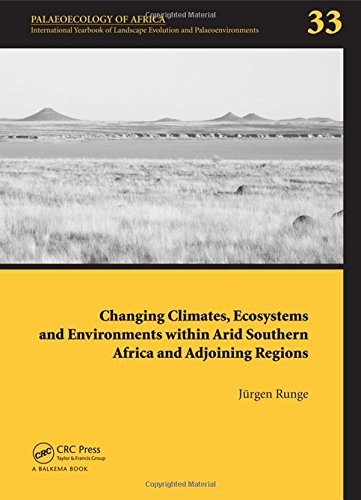

Most ebook files are in PDF format, so you can easily read them using various software such as Foxit Reader or directly on the Google Chrome browser.
Some ebook files are released by publishers in other formats such as .awz, .mobi, .epub, .fb2, etc. You may need to install specific software to read these formats on mobile/PC, such as Calibre.
Please read the tutorial at this link: https://ebookbell.com/faq
We offer FREE conversion to the popular formats you request; however, this may take some time. Therefore, right after payment, please email us, and we will try to provide the service as quickly as possible.
For some exceptional file formats or broken links (if any), please refrain from opening any disputes. Instead, email us first, and we will try to assist within a maximum of 6 hours.
EbookBell Team

0.0
0 reviewsThis book is volume 33 of the yearbook series ‘Palaeoecology of Africa’ presenting the outcome of a ‘tribute conference’ to the internationally recognized South African researcher and palynologist Professor Louis Scott. He has recently retired, but is continuing his active research career. The conference proceedings and articles published here highlight and celebrate Prof. Scott’s contribution to palaeoscience and to the natural sciences in general. The conference was organized in July 2014 by the National Museum, Bloemfontein and the University of the Free State, South Africa, and focused on both past and present environments, ecosystems and climates of the arid regions of southern Africa, an area that serves as major focus of Prof. Scott's research.
Louis Scott’s research interests include stratigraphic palynology, long-term continental environmental change during the Cainozoic, and interpretation of palaeoenvironmental records associated with archaeological sites. His research has contributed insights into the origin of our current environment by identifying long-term patterns of climate change. Results have been applied in numerical models of vegetation change in Africa and globally. The results of these studies are relevant across the fields of botany, geology, climatology, archaeology, anthropology and palaeontology.
The chapters revisit and discuss the scientific work of Prof. Scott: among others the reconstructions of vegetation and climatic history in various areas of southern Africa, including the Tswaing Crater with a record of 200 000 years, that give insights into environmental conditions during the Last Glacial Period and the subsequent development of modern conditions. Some observations also provide key baseline information, contributing to understanding past human and environmental contexts and climatic change and the effects of global warming.